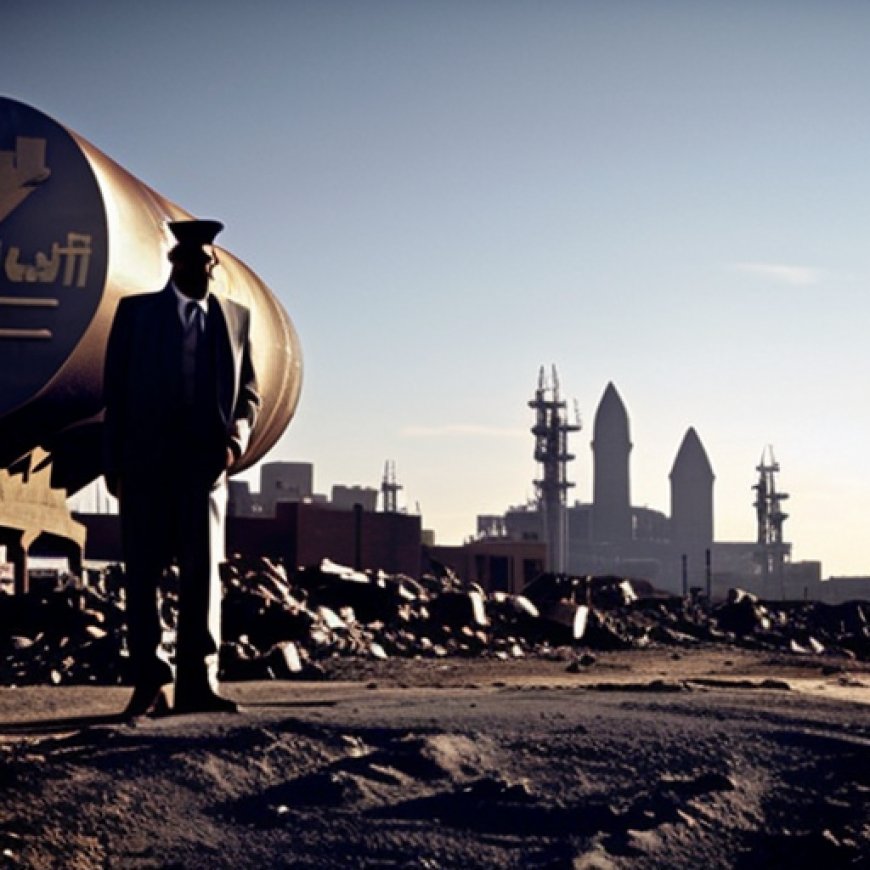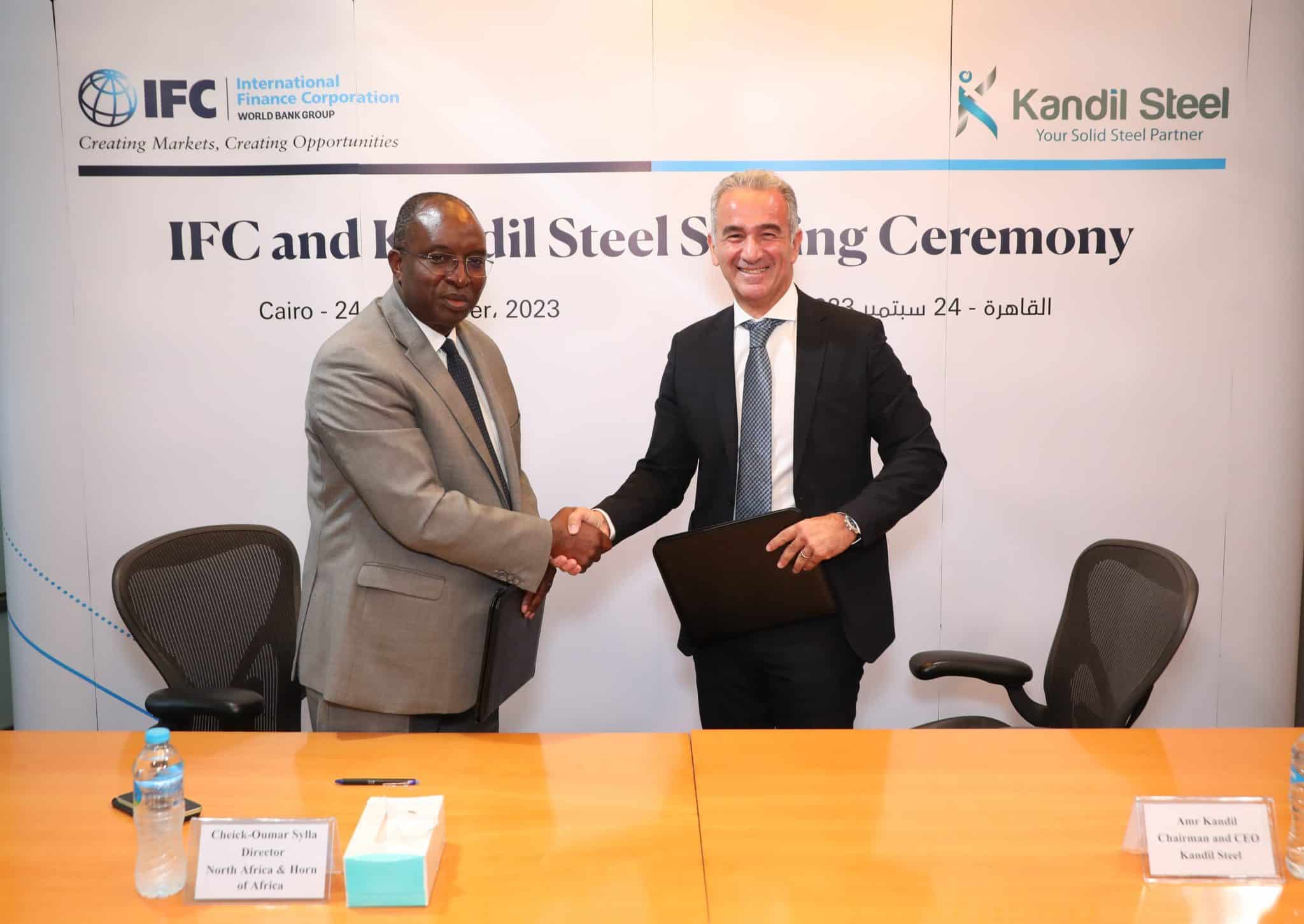EGYPT: IFC finances $25m for “sustainable” steel production | Afrik 21
EGYPT: IFC finances $25m for “sustainable” steel production AFRIK 21


The International Finance Corporation (IFC) Supports Kandil Steel’s Expansion and Environmental Impact Reduction

Introduction
The International Finance Corporation (IFC), the private sector financing arm of the World Bank Group, has granted a $25 million loan to Kandil Steel, Egypt’s leading steel company. This funding will be used to increase the company’s steel production capacity while minimizing its environmental impact.
Increasing Steel Production Capacity in Egypt
Kandil Steel, one of Egypt’s top 10 steel exporters, will benefit from the $25 million loan provided by the IFC. The financial support aims to assist the company in meeting its growing working capital needs and acquiring additional raw materials for the production of high-quality steel products. With a workforce of 1,000 employees, Kandil Steel exports refined steel to over 40 countries in Africa, Europe, the Middle East, and North America.
Decarbonisation Efforts
In addition to the financial assistance, the IFC will offer guidance to Kandil Steel in developing a decarbonisation program. This program aims to reduce the company’s carbon emissions and enhance its overall environmental and social practices. Kandil Steel’s Managing Director expresses gratitude for the funding, stating that it will help the company maintain its presence in export markets and meet the needs of the domestic market, aligning with Egypt’s national directive to enhance the value of manufacturing in the economy. Kandil Steel plans to increase its steel production from 500 to 800,000 tonnes by the end of 2024.
Importance of Sustainable Development Goals (SDGs)
The financing provided by the IFC to Kandil Steel is crucial in achieving several Sustainable Development Goals (SDGs). These goals include SDG 9: Industry, Innovation and Infrastructure, by supporting the growth and development of the manufacturing industry in Egypt; SDG 12: Responsible Consumption and Production, by promoting environmentally-friendly practices and reducing carbon emissions; and SDG 13: Climate Action, by contributing to the decarbonisation of the steel manufacturing industry.
The Steel Industry’s Environmental Impact
The steel industry is recognized as one of the most polluting sectors globally. It is responsible for approximately 7% of anthropogenic greenhouse gas (GHG) emissions worldwide, according to IF Steelman. Achieving carbon neutrality in this sector by 2050 will require the adoption of green hydrogen and other sustainable practices.
Read also- EGYPT: IFC finances green solutions at Rameda facilities in Cairo
Jean Marie Takouleu
SDGs, Targets, and Indicators
| SDGs | Targets | Indicators |
|---|---|---|
| SDG 9: Industry, Innovation, and Infrastructure | Target 9.4: Upgrade infrastructure and retrofit industries to make them sustainable | Indicator not mentioned in the article |
| SDG 12: Responsible Consumption and Production | Target 12.2: Achieve sustainable management and efficient use of natural resources | Indicator not mentioned in the article |
| SDG 13: Climate Action | Target 13.2: Integrate climate change measures into national policies, strategies, and planning | Indicator not mentioned in the article |
| SDG 17: Partnerships for the Goals | Target 17.16: Enhance the global partnership for sustainable development | Indicator not mentioned in the article |
1. Which SDGs are addressed or connected to the issues highlighted in the article?
- SDG 9: Industry, Innovation, and Infrastructure
- SDG 12: Responsible Consumption and Production
- SDG 13: Climate Action
- SDG 17: Partnerships for the Goals
The article discusses the increase in steel production capacity in Egypt and the efforts to reduce the environmental impact of the steel industry. These issues are connected to SDG 9, which focuses on promoting sustainable industrialization and fostering innovation. Additionally, the article mentions the need for decarbonization and reducing carbon emissions, aligning with SDG 13 on climate action. The involvement of the International Finance Corporation (IFC) in providing financing and advice demonstrates the importance of partnerships for achieving sustainable development, as highlighted in SDG 17.
2. What specific targets under those SDGs can be identified based on the article’s content?
- Target 9.4: Upgrade infrastructure and retrofit industries to make them sustainable
- Target 12.2: Achieve sustainable management and efficient use of natural resources
- Target 13.2: Integrate climate change measures into national policies, strategies, and planning
- Target 17.16: Enhance the global partnership for sustainable development
The article highlights the need to increase steel production capacity while reducing the environmental impact, indicating a focus on upgrading infrastructure and retrofitting industries to make them sustainable (Target 9.4). The mention of developing a decarbonization program and reducing carbon emissions aligns with the target of achieving sustainable management and efficient use of natural resources (Target 12.2) and integrating climate change measures into policies and planning (Target 13.2). The involvement of the IFC in providing financing and advice demonstrates the enhancement of global partnerships for sustainable development (Target 17.16).
3. Are there any indicators mentioned or implied in the article that can be used to measure progress towards the identified targets?
No, the article does not mention or imply any specific indicators that can be used to measure progress towards the identified targets. However, potential indicators could include the reduction in carbon emissions, the increase in steel production capacity, and the adoption of sustainable practices in the steel industry.
4. SDGs, Targets, and Indicators
| SDGs | Targets | Indicators |
|---|---|---|
| SDG 9: Industry, Innovation, and Infrastructure | Target 9.4: Upgrade infrastructure and retrofit industries to make them sustainable | Indicator not mentioned in the article |
| SDG 12: Responsible Consumption and Production | Target 12.2: Achieve sustainable management and efficient use of natural resources | Indicator not mentioned in the article |
| SDG 13: Climate Action | Target 13.2: Integrate climate change measures into national policies, strategies, and planning | Indicator not mentioned in the article |
| SDG 17: Partnerships for the Goals | Target 17.16: Enhance the global partnership for sustainable development | Indicator not mentioned in the article |
Behold! This splendid article springs forth from the wellspring of knowledge, shaped by a wondrous proprietary AI technology that delved into a vast ocean of data, illuminating the path towards the Sustainable Development Goals. Remember that all rights are reserved by SDG Investors LLC, empowering us to champion progress together.
Source: afrik21.africa

Join us, as fellow seekers of change, on a transformative journey at https://sdgtalks.ai/welcome, where you can become a member and actively contribute to shaping a brighter future.







